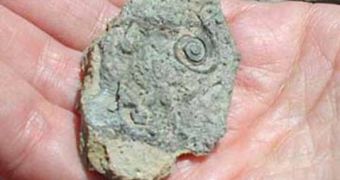University of Michigan paleontologists Philip Gingerich, Gregg Gunnell and Bill Sanders can take great pride in the way they have managed to make important archaeological finds in the vastness of the Egyptian desert. Their story may seem a bit far-fetched at first, but the trio say that there has been no scam involved. Basically, they succeeded in using Google Earth in a way that the software was very unlikely to have been created for. Having discovered the fossilized remains of a whale in a piece of masonry coming in from Egypt to Italy, Gingerich set out to find the quarry's location, only to learn that it was a mystery even to the people in Egypt.
The only thing he had to go on was the type of limestone in which the fossil had been found. So, rather than blindly, and somewhat dangerously, walking into the desert looking for a quarry no one seemed to know the precise location of, the expert turned on his computer, clicked on Google Earth, and began to look over areas around the Egyptian city of Sheikh Fadl, where his on-foot investigations had dead-ended. He analyzed the landscape around the settlement, looking for limestone that would match the one he was in possession of.
After using the software to thoroughly investigate the area, he finally came across what he was looking for, about 75 miles East of Sheikh Fadl, in an area where a secondary road branched off the main highway, and ended up in a pocked region that “just had to be” a cluster of quarries. The area was identified as Khasm el Raqaba, and Gingerich made arrangements to visit it, through some of his associates in Egypt. “Sure enough, when we got there, there was a huge quarry operation with trucks everywhere, blasting out blocks of limestone,” which meant that the chances of them finding fossils among dynamite blasts were close to zero.
The “enlightenment” came when the expert saw layers of red stone caught between layers of bright limestone. He immediately realized that the reddish parts were sediments blown by winds inside ancient caves. “Suddenly, it dawned on me: There should be animals preserved in that sediment, too, because caves often act as traps,” he said. Indeed, the entire area was laden with little bones, and held the promise of even more interesting finds waiting to be discovered.
“It's likely that animals moving from Asia to Africa passed through the Khasm el Raqaba area. The record isn't good enough to pin that down yet. But when these animals are studied in detail, they should lead to a better understanding of biogeography and dispersal events between Asia and Africa and between North Africa and the rest of the African continent,” Gunnell concluded.

 14 DAY TRIAL //
14 DAY TRIAL //